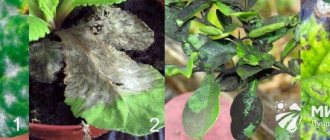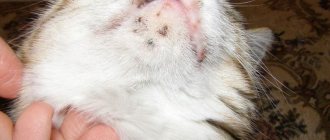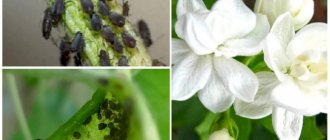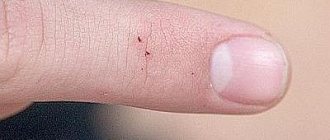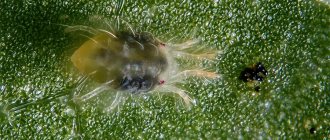Ficus diseases appear if the conditions of maintenance and care at home are violated. The growth of home ficus does not require complex care. In a modern apartment he feels great, but is still susceptible to many diseases. It is important to correctly identify the problem in order to choose the appropriate treatment method. Ficus diseases appear due to lack of prevention and unfavorable external factors (extreme heat, excess humidity). Often a flower becomes infected from nearby plants.
Why are ficus diseases dangerous?
Diseases of Ficus Benjamin can significantly damage the plant, and in some cases even destroy it. What should you do if your ficus leaves turn red or have white spots, mites, aphids and white or red dots? You need to act immediately. If you do not purchase special medicinal products in time and do not rid the sick houseplant of pests and diseases, as well as white lumps, it may simply die.
In addition, what is dangerous about an invasion of parasites is that it increases the risk of a similar problem occurring in your other evergreens. Study the most common diseases of ficus, determine the source of the outbreak of the flower disease, and then proceed to full treatment.
Causes of the disease
Sometimes ficus trees can develop various kinds of diseases. They usually occur due to improper or negligent care. Pests emerge from contaminated soil, quickly attacking the roots and destroying the plant. Or the flower may freeze and die from fungi and other related infections.
The main causes of ficus diseases:
- temperature imbalance;
- excess or deficiency of air humidity;
- untimely or frequent watering;
- lack or oversaturation of essential microelements.
Ficus is never placed near a heating radiator. If heating devices are located nearby, then a moistened cloth is placed on them and on the windowsill for protection, and the surface of the flower is often sprayed with small drops. If the humidity, on the contrary, is high, then it is advisable to wait until the soil dries 2-3 cm, and then continue watering.
You should beware of extreme heat and excessively dry air, strong drafts and gusts of wind. You cannot spray ficus and then place it in the sun - you can cause the leaves to burn.
If the grower takes diligent care of the plant, then the risk of disease is minimized. However, sometimes cuttings and young stems may have hidden diseases that are not noticeable at first glance. Infections and parasites (for example, nematodes) are introduced from the soil. Ficus often dies from them.
It is recommended to fertilize ficus in the warm season - once every two weeks. With the onset of autumn, they feed less often; in winter there is no need to touch the flower. Nourish the soil according to the instructions on the package so as not to overfeed. The leaves also react to excess feeding - dots and specks appear on them.
If rot appears at the base of the root, the leaves wither and curl, the culprit is most likely constant flooding. If the ficus stops growing, the soil is depleted and mineral resources are running out.
Leaf diseases
Why do ficus leaves fall off? There may be several reasons why the plant is sick. Among the most common diseases of the leaf blade of the home ficus, the following are worth highlighting.
If the leaves begin to wither and curl inward, this is the first sign that the ficus is sick. The appearance will clearly show the reason why the infection occurred. Leaf blades may look like this.
- Brown. Demonstrate a state of stress as a result of transplantation.
- With reddish spots. Several reasons: in most cases - sunburn, as well as increased watering and drafts.
- With brown spots. Insufficient watering and dry air, exposure to heat, excess fertilizer in the soil. Plaques of this color along the leaf veins indicate infection by parasites.
- Covered with gray coating, cobwebs and white spots. Mites, thrips larvae, beginning gray rot.
- Yellow edges with small white dots. Excessive watering, excessive humidity.
The leaves are turning yellow
As a rule, this problem occurs in winter. Heating devices are actively working in the apartment, and hot air flows are often directed at indoor plants. For a sick ficus, this factor will be disastrous. The leaves begin to turn yellow, wither and gradually fall off. When a flower sheds its leaves en masse, it stops growing and may die.
The best solution for you is to move the flowerpot with the evergreen specimen to another, much more suitable place. However, be careful when looking for a new corner to place your ficus pot. If you disturb it too often, the yellowing of the foliage may begin again, but this time the ficus will get sick due to the stressful situation you created.
Another reason for yellowing leaves is burns caused by direct sunlight.
How to save a plant from this?
- In summer, the flower should not be exposed to direct sunlight for a long time.
- In winter, it is better to relocate it to places far from the batteries.
To humidify the air, use a container of water near the plant.
Leaves fall off or become small
Such ficus diseases also pose a serious danger to the plant, so they must be treated as quickly as possible. The diseased plant gradually withers, and the reason for this is a lack of nutrients in the soil. The situation can be corrected. To do this, it is necessary to replant the plant, completely replacing the soil composition;
The tips of the leaves turn yellow, yellow spots appear
This problem indicates an excess of moisture in the soil. Do not forget that ficus loves moisture, but watering should be moderate. Be sure to let the soil dry before irrigating the substrate again. For an indoor flower, a lack of moisture will be much less destructive than its excess.
It is urgent to dry the soil and review the watering rules. Ficus does not tolerate stagnation of water in the pan. Drafts and, in general, any sudden change of environment are harmful to him.
Ficus sheds leaves from below
This reason is considered natural - each ficus leaf blade develops within three years, and then ages and falls off. However, the trunk cannot be completely exposed, since in this case it will be very difficult to save it. If you observe the fulfillment of unsuccessful forecasts, it’s time to replant the flower or add complex mineral fertilizers to the soil;
Why does ficus shed its leaves completely?
The main reason for dropping leaves is overdried soil or watering with poor quality water. If a ficus sheds its leaves due to a lack of water, then its root system is also not in the best condition, because it is directly related to nutrition and water balance. In this case, you need to water it generously and subsequently monitor the quality and frequency of watering.
Ficus tree varieties tend to fall off the leaves of the lower part of the trunk , but this is not a disease. In general, the bush itself never becomes bare, but on the contrary produces more and more new leaves. Ficus leaves may fall off in other cases. The flower is either affected by an infection or by some pest. In such cases, treatment with special preparations is necessary.
Pests on ficus leaves
As a result, the leaf blade dies sooner or later if treatment is not taken. You can get rid of pests with the help of special insecticidal preparations, which you need to buy in the store.
Ficus doesn't grow
The following external symptom can also indicate a problem with the soil: the leaves begin to grow smaller and smaller and eventually the ficus stops growing altogether. Most often this occurs due to soil depletion . When the moment comes that the soil is depleted of all useful resources, the recently blossomed ficus leaves begin to gradually become smaller in mineral components, and their predecessors turn yellow, wither and fall off.
To return the plant to normal functioning, it is necessary to replant it or replace the soil. The substrate must be saturated with the necessary mineral complex and vitamins. Stores now sell soil specially prepared for ficus.
Main diseases and their treatment
Regarding its care, the ficus makes few requirements, and all of them are easily met: sufficient lighting without direct sunlight, infrequent but regular watering, a range of temperatures that are normal for our climate zone and are comfortable for the flower. When they are regularly violated, the flower feels uncomfortable, which is signaled by changes in appearance - falling leaves, changing its color. But this condition cannot be called a disease: the ficus, with proper care, quickly recovers on its own.
If the plant suffers for a long time, its immunity decreases and the likelihood of contracting fungal infections increases. Most ficus diseases are treatable, and their prognosis is favorable - the flower recovers completely.
Leaf diseases
It is the appearance of the foliage of a flower that first signals its unhealthy state.
Yellowing of the leaf blades of a plant indicates disturbances in temperature or lighting conditions. The cause is too dry, warm air or excess light, especially sunlight on the leaves (also through glass). In the latter case, the burned plates die.
Foliage may turn yellow even if the flower is too close to a hot radiator or other heating source. You can increase indoor air humidity in different ways:
- turn on a special humidifier:
- regularly place a damp towel on a heater in winter or a sun-heated window sill in summer;
- Spray the flower more often (remembering that this should not be done if it is in the sun - in combination with drops after spraying, this will lead to burns).
The leaves also fade and turn yellow if the ficus is changed location too often. He perceives any changes as additional stress.
Falling leaves is most often caused by the following reasons:
- lack of nutrients - despite its unpretentiousness, on too poor soils, ficus does not have enough substances necessary for development. Adding only fertilizers does not always bring results - the plant needs to be transplanted into more nutritious soil;
- excessive soil moisture - before the leaves begin to fall, they become covered with spots and yellowness appears at the edges. You should wait until the soil dries 1-3 cm and then resume moderate watering. If this does not change the situation, the process of rotting of the roots is likely. You should urgently replant the bush, removing the damaged part of the root system;
- lack of watering - both excess and chronic lack of water are painful for the flower.
The appearance of spots and dots on the leaves of Ficus Benjamin can also be caused by excess feeding. The optimal regime for applying fertilizers is once every two weeks in spring and summer - in quantities according to the recommendations on the package. In the fall, fertilizing is reduced, and in winter, when the flower is dormant, it is not fertilized at all.
The falling of ficus benjamina leaves as new ones grow is a natural process: on a healthy bush, the leaves live for three years, after which they are replaced by new, young ones. If you notice that new leaves do not appear to replace the fallen ones, you need to carefully examine the bush - both insects and diseases can be the culprits.
Many fungal diseases appear first on the leaves. Their development is indicated by spots of black, brown, white, yellow.
Fungal infections
These include powdery mildew, rust, gray rot. All of them pose a serious danger to Ficus Benjamin, since severely affected specimens sometimes cannot be saved. I can’t think of a better way to prevent any plant diseases than to comply with simple requirements for its care. In addition, periodically - at least once a week - you should carefully inspect the bush so that if there are problems, they can be resolved at the very beginning.
Gray mold (botrytis)
The causative agent of the disease is fungi of the genus botrytis. Their development in temperate climates begins in the spring, and is especially active in damp and cold conditions (the optimal temperature for it is -15˚C).
The main symptom of the disease is blackening of the leaves and their falling off. The trunk and foliage are partially covered with a gray coating. To combat the disease, reduce the frequency of watering and air humidity, providing ventilation without drafts. Damaged leaf blades are removed. Usually these measures are enough for the Benjamin ficus bush to recover.
For prevention, nearby healthy bushes are treated with fungicides. Up to three treatments are carried out with an interval of 10-12 days.
Sooty mushroom
Another name for the disease is rabble. Its causative agent is the fungus Aspergillus. It prevents Ficus Benjamin from breathing by clogging its pores, and interferes with photosynthesis by shading the leaves. Sugary secretions left by aphids and some other insects are the best environment for its reproduction. Therefore, pest control is the most effective way to get rid of fungus.
Late blight, pythium, rhizoctonia
With these fungal diseases, both the roots and the stem rot. They develop quickly at normal room temperature. Infection with late blight and rhizoctonia usually occurs through the soil (if garden soil is used), unsterilized pots from diseased plants and drafts from the leaves of diseased specimens. Pythium - definitely through water.
The first sign - slower growth of Ficus Benjamin - is usually not noticed. When obvious signs of disease are visible - spotting on the stem, leaves - the chance to save the bush is already minimal. You can try to treat the plant: remove the affected parts and replant in clean soil, treat with fungicides. But it is often more advisable to destroy the diseased specimen so that the others do not become infected.
For prevention, you can water the soil in pots monthly with a slightly pink solution of potassium permanganate.
Powdery mildew
Caused by powdery mildew fungi. There are many varieties, each “specializing” in only one culture, without switching to others.
It appears in spots - as if the leaves, petioles, trunk are sprinkled with flour. The provocateur of development is too warm and humid air. Treatment of Ficus Benjamin is carried out by spraying with a solution of the following preparation:
- take 10 g of soda ash, 2-3 g of laundry soap. Dilute in water;
- Dissolve 2 g of copper sulfate separately and combine both mixtures;
- add water to 2 liters and spray the bush.
Rust disease
This is the colloquial name for the disease “anthracosis”, which really looks like rusty spots on leaf blades. If the plant is severely affected, it is destroyed. If partially, the affected areas are removed and treated with a systemic fungicide (it does not treat fungal diseases, but stops them for a while, allowing the flower to cope with them on its own). The main thing is to establish proper care for the plant.
Infectious diseases
If various pests appear on the leaves of Ficus Benjamin, you can fight them quite effectively, especially if you noticed the problem at an early stage. But if you are faced with infectious diseases, it is much more difficult to cure the plant from them.
The first signs are difficult to notice, and when a flower is seriously ill, even the most effective methods do not always give the desired result. To defeat infectious diseases of ficus plants, it is necessary to take a closer look at what plant ailments a domestic gardener may encounter, and what to do in this case.
Fungal diseases
Fungal diseases of ficus are considered the most dangerous for the plant. If pests of Ficus Benjamin are removed using high-quality insecticides, in some cases a green specimen affected by a fungal disease cannot be saved even by an experienced gardener. What specific ficus diseases fall into this category is worth studying carefully.
Anthracnose or rust
Along the edges of the leaf, rust-colored spots with a brownish border are visible. The damaged part dies, forming holes in the leaves. Then they darken and fall off. The infection is caused by a fungus called Colletotrichum orbiculare.
Pests are controlled by spraying the roots and stem with a fungicide. It is also used to treat surfaces with “ulcers” from rust.
Powdery mildew
Causes white plaque-like spots. Occurs in areas of pest damage and fungal infection. Plaque also appears from strong light exposure.
- To get rid of powdery mildew, laundry soap alone is not enough. You will also need copper sulfate and soda ash. Prepare a medicinal solution by mixing a teaspoon of soda and two grams of soap in a liter of water. Separately dilute 2-3 grams of copper sulfate. Combine everything together, add another liter of water and spray the affected parts with this mixture.
Botrytis
A gray coating consisting of small spores of the fungus Botryotinia fuckeliana. The spots gradually become darker, then the leaf blades fall off the stem.
Sooty mushroom
The lesion looks like a black coating similar to soot. The reason is an active attack by insects. Their sticky secretions feed fungi that silently multiply on the foliage.
- Black plaque indicates a double lesion. Sooty fungus occurs as a result of insects. A concentrated soap solution will prevent the spread of fungus. If the leaves are severely affected, it is better to remove them.
Cercospora
Caused by fungi of the Cercospora family. Visually, the manifestations of the disease look like brown and grayish dots on the underside of the leaf. Then the dots become much larger, and the leaves turn yellow and fall off.
Cercospora and anthracnose require treatment with special antifungal drugs.
Such an infection cannot be started; urgent measures must be taken. The ficus may not survive and dry out completely. Treatment of fungal infections is carried out immediately with special means.
Late blight, pythium or rhizoctonia
Dangerous fungi that cause rotting. It is better to throw out or destroy an infected ficus to keep nearby plants healthy.
Gray rot
Among the diseases of the house ficus, which are the result of the activity of fungal formations on the flower, it is worth highlighting first of all gray rot. The key sign of the disease is blackened leaves, which eventually fall off. As a rule, the disease appears due to excessively high humidity in the room. In the fight against this disease, it is necessary to reduce the frequency of watering and also ventilate the room more often.
- If gray rot appears, then it is necessary to immediately remove the infected leaves. The soil at the roots should dry well. This should help revive the plant. It is also recommended to replace the soil and replant the remaining roots in clean soil.
Sooty mushroom
Treatment of black plaque (and this is a key sign of the disease) may be necessary after the plant has been attacked by harmful insects. The initial stage of fighting the disease involves washing the flower with soapy water. Soak a sponge in the liquid and carefully go over each leaf. The stem must also be treated with a fungicide. As a preventative measure, do not overwater the flower in the future. Irrigating the substrate with a solution of manganese will not hurt either. It is advisable to carry out this procedure at least once a month.
Fungi on leaves
Among the fungal formations that mostly appear on leaf blades, it is worth highlighting cercospora, anthracnose, and botrytis. As such diseases develop, black, yellow or brownish spots develop on the leaves. If you don’t fight them, the same result awaits you: the death of the leaf blade.
The disease must be eliminated by removing the affected parts and treating the plant with a fungicide.
Infections and fungal infections
Proper care will keep any plant healthy. But sometimes even he is not able to get rid of unwanted problems that arise due to the diligent care of the gardener. Ficus diseases also occur due to external factors: initially hidden diseases in newly purchased plants, cuttings, when replacing the soil mixture or transplanting into open ground.
Infections and fungal infections of ficus
The most common diseases of any type of ficus genus include:
Powdery mildew
White spots that look like a fluffy coating that are easily erased.
Reason: from direct sunlight, places damaged by insects, subsequently infected with fungus. Treatment: The plaque is washed off with a sponge soaked in soapy water. Severely affected leaves are removed. The plant is treated with a fungicide.
Anthracnose or rust
Uneven, rusty spots with a brown border along the edge of the leaf. After some time, holes form in their place. Later the leaves completely darken and die. Cause: Fungus Colletotrichum orbiculare. Treatment: Diseased areas are cut off, the ficus is treated with fungicide and copper oxychloride.
Cercospora
Small brown or black dots at the bottom of the leaf, which gradually increase in size. After a couple of days, the leaf withers and dies. Reason: Dampness, waterlogging in the room. Infection with a fungus of the genus Cercospora. Treatment: spraying with a fungicidal preparation.
Botrytis, gray mold or mold
Foliage with a gray coating. If you shake it, dust consisting of tiny fungal spores rises into the air. As the disease progresses, brown spots with a dark halo appear. Soon the leaf darkens and falls off the stem. Cause: Increased temperature and humidity. Infection with the mold Botryotinia fuckeliana. Treatment: Treatment with insecticides, fungicides and removal of infected parts.
Root rot
Wilting, gray foliage. Rotting of the base of the stem and root system. Reason: Strong overflow. Root damage by fungal spores. Treatment: Doesn't exist. It is recommended to discard the plant.
Sooty mushroom
The leaves become covered with a gray or blackish coating, similar to soot, and emit a rotten smell. Cause: Sticky secretions of insects with simultaneous infection by a fungus that feeds on these waste products. Treatment: Wash the plants with soapy water. Removing infected leaves and treating with a fungicidal solution.
Root rot
If a ficus gets sick with root rot, it means that you did not follow the plant’s watering regime at one time. In this case, the root system begins to actively rot, and the stems and leaves wither, gradually losing their brightness and acquiring a grayish color.
Interestingly, if the infection gets into the soil, it may not spread to the flower for some time. But sooner or later this will happen, and then the only correct solution will be to throw the plant and the pot in the trash.
Pests attacking a plant
Spider mites on ficus, thrips on ficus, mealybugs - all these parasites can cause a lot of harm to your green specimen. For example, an invasion of spider mites is not immediately noticeable. It is quite difficult to detect parasites on a flower when there are only a few of them.
Nematodes penetrate the root system and cause the appearance of nodular and spherical growths on the trunk. The toxins released by these parasites gradually affect the entire plant; it needs to be cured and replanted in new soil. Before the procedure, the ficus is kept in an insecticide solution for several hours, completely eliminating dangerous infection.
Aphid
You can become infected with aphids from the air; they are carried in by drafts. A sticky whitish coating, similar to flour, appears on the foliage. It feeds on sooty fungus, which is dangerous for the bush. If there are several bushes, the infection spreads quickly.
- If there are aphids in the house, they often infect not one, but several plants at once. We will have to resort to a comprehensive refurbishment of the premises. Insecticides are used, in addition to the standard treatment with potassium permanganate and soap.
Shchitovka
It reproduces in trays under plants, where water often remains. The insect sucks the juice from the foliage, depriving it of vitality. The presence of “swollen” brownish spots is a consequence of the introduction of scale insects.
- If you notice an insect such as a scale insect, then you need to use the drug "Actellik". It is recommended to treat the plant with it at least three to four times a week. It is also often necessary to wipe the leaves with a soap solution.
Mealybug
Dangerous parasites that can suck all the strength from a plant and lead to death. Individuals reach 4-5 mm, their white cocoons and adult parasites are clearly visible on the ficus. The first sign of its appearance is the rapid fall of leaves.
Mite
Causes serious damage to ficus. Loves heat and lack of moisture. Leaves behind a barely noticeable cobweb and grayish-brown spots. The leaves begin to dry out and fall off.
- Experienced gardeners suggest getting rid of swarms of ticks by using garlic tincture. To prepare it, take two heads of garlic. They are finely chopped and poured with a liter of boiling water. Place in the dark for 5 days, after which the same amount of water is added. You need to spray the inside of the leaves and stems, as well as the soil.
Thrips
Their effect on the plant is similar to the introduction of mites. Insects suck out vital juices; their comfortable environment is high temperature and dry air. They leave brown spots, causing the leaves and stem to dry out.
But a huge colony of ticks is more difficult to fight. That's why it doesn't hurt to regularly inspect the flower to look for mealybugs or aphids on the stems and leaves. If aphids appear on a ficus, how to deal with them? Buy effective insecticides and carefully treat the flower.
Pests on ficus
In addition to leaf diseases, Ficus rubber or Ficus Benjamin, as well as other varieties of the Mulberry family, suffer from pest attacks.
The most inveterate insect pests that settle on this indoor flower are scale insects, spider mites, aphids, thrips and mealybugs.
Shchitovka
Signs that a scale insect has appeared on a ficus are reddish spots on the inside of the leaf blade. The same spotting may appear on the trunk of the flower. These pests feed on ficus sap, leaving a viscous coating as a basis for the proliferation of sooty fungus.
The leaves of infected specimens are treated with a soap solution. This is followed by spraying them with Actellik three times for 20 days. Optimize your pet's care to prevent these parasites from appearing.
Spider mite
In addition to scale insects, red or yellow spider mites often appear on ficus plants. Dry air with elevated room temperatures are optimal conditions for the appearance of these insects. The mite, like the scale insect, feeds on the sap of plants, damaging their surface and leaving a gray spot. These pests reproduce actively and quite quickly, enveloping the entire plant in a web. In advanced forms, the ficus may die.
To kill spider mites, plants are washed with a soap-based solution. In this case, it is necessary to ensure high humidity in the room, which these insects really do not like. Frequent spraying of flowers and periodic showers will help in the fight against them. After wet treatment, it is recommended to cover the ficuses with polyethylene and leave for 2-3 days. After this time, the plants are treated with garlic tincture. In advanced cases, they are treated with insecticides.
Aphid
Aphids are a harmful insect that quickly infects nearby indoor flowers due to their ability to fly. Most often, aphids accumulate on the underside of leaves. As a result, the foliage on ficus trees begins to turn yellow and curl. To kill aphids, the leaves are sprayed with a solution of pyrethrum.
Thrips
Elevated temperatures and high humidity in the room are ideal conditions for the appearance of thrips. This is an insect that settles on the inside of the leaf blade in small groups. The affected leaf blades first acquire a yellowish-white color, then wither and dry out. These pests are carriers of many diseases. Therefore, timely and competent care will prevent their occurrence.
Repeated treatment of the ficus with Actellik insecticidal solution or pyrethrum solution will get rid of thrips. Treatment is carried out repeatedly.
Mealybug
Mealybug is another pest that sucks the sap from the plant and stunts its development. This insect is brown in color, shrouded in a white coating similar to cotton wool. Pests very quickly move to other nearby plants with the help of wind or draft. You can notice their settlement in the axils of the leaves.
The plant is cleaned of insects and plaque, then sprayed repeatedly with a solution of tobacco or soap every 7 days. In this case, the ficus will require careful care. In case of advanced disease, the flower is sprayed twice with Confidor every 10 days.
Ficus benjamina diseases
This species is popular due to its beautiful glossy leaves and stems that can be intertwined. Grows up to 3 meters high with proper care.
Causes of ficus disease:
- Improper care;
- Fungal infection;
- Reproduction of pests.
Due to improper care, problems appear in the form of root rot and the appearance of spots on the leaves.
Root rot develops due to systematic waterlogging of the soil. In a humid environment, a fungus develops that affects the roots. This causes the leaves to change color to yellow and become limp. Within a short time they darken and fall off. The soil may become crusty. As a result, the plant dies.
How to treat it? Pull the flower out of the pot and shake it lightly, clearing the roots from the soil. If they are dark and soft, the plant is dead and nothing will help it. When the main part of the roots is healthy, you need to trim off the spoiled roots. You also need to rid the crown of diseased leaves and branches. Replant the plant in a new pot with fresh soil.
You can water the flower only after new leaves appear and then maintain the watering regime.
Light brown spots may appear localized at the tips, along the edges or throughout the entire area of the leaves. Then they dry out and fall off. This is caused by too high a temperature and dry air. This often happens due to an excess of fertilizers in the soil. Eliminating the causes of its occurrence will help get rid of the problem. It is necessary to place the plant in a cooler place, increase air humidity and postpone fertilizing the soil.
There are other problems associated with pests and infections.
If rust appears on the leaves of Ficus Benjamin , then the problem is the fungal disease Anthracnose. Botrytis is similar, but in this case the spots become yellow-brown in color. Over time, the spots turn into ulcers, the plant sheds its leaves and dies. For treatment, it is necessary to remove all affected leaves, treat the ficus with a fungicide solution and move it to a less humid place.
Fungicides are chemical solutions used to control fungus on plants. They also treat seeds to remove fungal spores. The concentrate of the substance is toxic to humans, but a properly prepared solution will not cause harm.
Cercospora blight is another fungal disease that appears on ficus as numerous black spots on the bottom of the leaf. As the disease progresses, they turn yellow and fall off, and the plant dies. Treatment according to a similar scheme: remove the affected areas, treat with an anti-fungal solution, water less often.
Sticky leaves and black coating are a progressive sooty fungus on Ficus Benjamin. It affects areas with waste products of parasites. The scale insect on Benjamin's ficus leaves behind a sticky trail on which it settles. Cleaning with soapy water will help.
White coating on the leaves indicates mealybug . At the initial stage, a solution of laundry soap will help; if the flower is severely affected, then the diseased leaves are removed and the ficus is treated with a fungicide.
When a ficus grows in a warm and humid room, it can be affected by gray rot . This is mold, if you shake the leaf, you can see how its spores fly away (they look like gray dust). Brown spots appear on the foliage; if no action is taken, they grow. The leaves darken and fall off. This disease is treated with a solution of an anti-fungal drug. You need to water the flower less often during treatment.
Root rot and how to get rid of it
The most unpleasant disease can be considered root rot. This fungal disease cannot always be cured. If you notice a crusty coating on the soil of a ficus, you need to dig up the plant and inspect the roots. If they are too dark and soft, it will not be possible to revive the plant. If the roots are elastic to the touch and light in color, proceed to saving the sick person. Necessary:
- Remove all darkened roots, as well as all leaves and branches with traces of disease.
- If the ficus crown is small, it is necessary to thin it out so that the plant spends energy only on getting rid of the disease.
- Replant the ficus in new soil and treat it with a solution of carbendazim fungicide.
- Place the plant in a bright place, but not in the sun.
- Since ficus diseases are most often caused by excess moisture, begin their treatment by observing watering norms. To find out that the plant needs moisture, poke the soil with a stick and see how dry it is. If the wet layer is at a depth of 4 cm, you can water it.
Important!
Ficus benjamina does not like frequent replanting, so the procedure should be performed only when its roots begin to crawl out of the pot.
Diseases of Ficus Rubber
This evergreen plant with large shiny leaves is often grown as an ornamental plant and, like other species, is susceptible to various diseases.
The most common leaf diseases are:
- Blackening and falling off. The reason is waterlogged soil. Solution: let the soil dry, cut off the rotten roots, water only when a third of the soil level in the pot is dry.
- The appearance of red spots. These are burns caused by direct exposure to sunlight after spraying. This is especially true for plants located on the south side. It would be correct to move the plant to a shaded place, but not to the darkest corner.
- White spots. They talk about hypothermia of the ficus. You need to move the pot to a place where there are no drafts. The most frozen leaves will eventually dry out and fall off on their own. Others will remain with stains. If you create normal conditions for the ficus, new leaves will grow of a uniform color.
- Acquiring an abnormal shape at the edges. The problem is in the root system; most likely, the small roots were damaged during transplantation or from waterlogging. Solution: water the ficus less often, add nutrients for the roots.
More often than others, it is the rubber-bearing ficus that is affected by anthracnose. In this case you need:
- Reduce watering to a minimum.
- Set the pot away from other plants (or isolate it with a partition).
- Remove leaves with visible spots.
- Remove old soil and disinfect the pot.
- Treat the roots with a weak solution of potassium permanganate and transplant the plant into new soil.
Also, small brown streaks may appear on this type of ficus, which indicates a pest. These are Thrips larvae. The result of their vital activity is also a silvery coating and small red dots. It is necessary to treat the leaves and soil with a fungicide solution. Simply removing the affected leaves will not work - the larvae also live in the soil.
White plaque in the form of dots indicates the development of spider mites. To get rid of the parasite, the flower is washed well and then treated with a chemical.
Leaf spotting, ways to eliminate spots
Spots on ficus leaves appear due to improper care, but can also be caused by diseases such as anthracyclosis and cercospora.
Brown spots
The appearance of brown spots can cause serious disease and even crown loss.
Let's figure out why brown spots appear on ficus leaves. This may be due to high room temperature, dry air and untimely watering. The treatment is simple - proper care and maintenance of the ficus. And also feeding, but after treatment.
Attention!
Maintain a moderate temperature in the place where the ficus stands. He does not like either heat or cold.
Gray leaf rot
Gray mold is called bortritis.
This plaque appears due to frequent watering of the plant. Mold-affected areas of the tree are removed and the frequency of watering is reduced. It is advisable to keep the pot and flowerpot separately from other plants during treatment.
Black plaque on leaves
Black plaque is also caused by excess moisture.
The disease is caused by fungal spores with the scientific name Cercospora. This fungus can also be caused by scale insects on ficus. Treatment consists of getting rid of parasites and reducing watering. After this, it is necessary to treat the ficus with a solution that destroys the fungus.
Ficus is especially popular among lovers of home gardening due to its decorativeness, compactness and unpretentiousness. However, like any plant, it can become sick or be attacked by insect pests as a result of improper care. To properly treat ficus diseases, you need to be able to recognize them in time and know methods for solving problems.
Ficus Robusta diseases
This is a popular variety of rubber ficus. It grows tall and sometimes needs special supports. Easy to care for and resistant to pests. But if normal conditions are not maintained, he can get sick.
So, you need to pay attention if the leaves turn yellow and fall off quickly. The reason may be a draft or improper care - lack of light, infrequent watering.
Brown spots have formed on the leaves - the soil is waterlogged. Over time, a rotten smell may appear. This indicates that the root system is suffering and you need to inspect the roots, replant the flower and adjust the watering regime.
Scale insects or spider mites appear if the flower is in a room with warm and dry air. Regular spraying of the crown and optimal temperature (25-30°C in summer, 16-20°C in winter) will solve the problem.
When care is carried out correctly and regularly, there are no pests, but the ficus Robusta continues to shed leaves - this indicates stress. It manifests itself if you frequently rearrange the plant, or place it in an inappropriate place (for example, a corridor).
Common problems
Ficus trees have their own specific problems that are most common to them. Let's talk about what causes them and how to solve them.
On a healthy plant, leaves live for 2-3 years, after which they begin to fall off. The fact that the ficus sheds old leaves is a natural process that should not cause concern. The crown in this case is quickly restored due to the growth of new leaves.
But sometimes the leaves fall off in too large quantities. The reason for unexpected leaf fall may be moving the ficus to another place. Ficus does not like drafts, so take this into account when placing it.
On a note! From the very beginning, the ficus should be placed in a permanent place and disturbed as little as possible. If there is a need to move it to another room, the pot is placed with the same side to the light as it was located before.
Natural aging of leaves begins with yellowing. First, the leaves in the lower part of the crown are renewed, because they are older. If the top of a ficus tree turns yellow, you need to look for other reasons.
These plants like moderate watering with a little drying of the earthen clod. If you regularly overwater your ficus and do not maintain the required intervals, it will respond by yellowing the leaves. If you notice such an unpleasant phenomenon, pay attention to whether there is water in the pan and drain it in this case. When overwatering, the soil must be thoroughly dried; the flower cannot be watered for 2 weeks. Instead of watering, you can sometimes wipe or spray the leaves.
By yellowing the crown, the ficus may also respond to a lack of lighting or keeping it at low temperatures. Still, this is a tropical plant that needs a lot of light and a comfortable temperature regime.
In winter, it is advisable to provide ficus with lighting and a temperature of at least 18°C.
Canopy varieties are especially sensitive to dry air. At low humidity levels, they can curl the leaves, which will begin to turn yellow. Spray the shoots with warm water more often, especially when the heating is on.
Leaves can also turn yellow due to insufficient nutrition, especially fast-growing species. During the period of active growth, ficus plants need to be fed once every 2 weeks with complex mineral fertilizer. In winter, fertilizing is applied once a month.
Yellowing of ficus foliage can be caused by the presence of pests. To make sure of this, carefully examine the plant, especially the underside of the leaves. Small dark spots and dots and a sticky coating on the leaves should alert you. The sooner you treat pests if they are detected, the faster the plant will look healthy.
Problems with the plant may appear even before purchase. Therefore, carefully examine the ficus that you chose in the store. If there are already spots on the leaves, it is better to set the pot aside. After all, the plant will have to undergo acclimatization in a new place, and only healthy plants can do this.
Attention! If spots on the leaves of a flower have already appeared during their stay in your home, look for the reasons for their appearance in improper care and the appearance of pests.
We wrote above that spots and dots appear due to various fungal diseases, damage to the flower by pests, due to rotting of the roots as a result of excessive watering - the leaves in this case become gray and lose turgor.
Prevention of diseases
Proper bush care will help minimize the risk of ficus disease. You should adhere to the watering schedule, feed with mineral components and cut off dry leaves and branches on time. The plant also needs to receive the daily norm of light and heat; the air in the room should not stagnate.
To protect the rubber ficus from infection and pests, you need to follow a number of rules:
- The newly acquired flower must be kept in quarantine for some time. Typically, the isolation period is no more than a week. It is better to keep the ficus in a separate room so that the disease is not transmitted through the air. If after a week of quarantine no infectious diseases have been identified, the plant can be placed next to others.
- It is advisable to inspect flowers every day. Particular attention should be paid to the lower part of the stem and the inner surface of the leaves.
- Every month, ficus foliage should be treated with soapy water. This procedure is vital for bushes located on open loggias or growing outdoors.
Why do ficus trees get sick?
First of all, improper maintenance conditions lead to withering:
- strong changes in air temperature in the room, or its constant overestimation;
- dry air, drafts;
- insufficient or, conversely, too bright lighting;
- inconsistency with the watering regime: too frequent or, on the contrary, insufficient;
- improper mineralization;
- contaminated soil.
Having corrected these shortcomings, the ficus will quickly return to normal and reward it with bright colors.
But some diseases are caused by more serious reasons: ficus can be attacked by fungal diseases and pests, photos of which will be given below. They require more attention and time, and in some cases, disposal of the flower.

